- Tips for Fertilising Tomatoes
- Increase Yields and Produce
- 1. Choose the right fertilizer
- 2. Apply fertilizer at the right time
- 3. Use organic fertilizers
- 4. Mulch around the plants
- 5. Water properly
- 6. Support your tomato plants
- 7. Monitor for pests and diseases
- 8. Prune for better yields
- 9. Provide proper spacing
- 10. Monitor soil pH
- Large, Juicy Fruit
- 1. Choose the right tomato varieties
- 2. Provide adequate water
- 3. Apply organic mulch
- 4. Choose the right fertilizer
- 5. Prune and support your plants
- 6. Monitor pests and diseases
- 7. Harvest at the right time
- 8. Storage tips
- 9. Enjoy your juicy tomatoes!
- Choose the Right Fertiliser
- Find the Right Nutrient Balance
- 1. Soil Testing
- 2. Nitrogen
- 3. Phosphorus
- 4. Potassium
- 5. Trace Elements
- 6. Applying Fertiliser
- 7. Regular Monitoring
- Consider Organic Options
- Apply Fertiliser at the Right Time
- During Planting
- 1. Prepare the soil
- 2. Add organic matter
- 3. Apply a balanced fertilizer
- 4. Mix fertilizer into the soil
- 5. Plant the tomatoes
- 6. Mulch the planting area
- 7. Water thoroughly
- Throughout the Growing Season
- Avoid Over-Fertilising
- “Question-Answer”
- What are some tips for fertilising tomatoes?
- How can I increase tomato yields?
- What kind of fertiliser should I use for tomatoes?
- When should I fertilise my tomato plants?
- Can I use organic fertilisers to fertilise tomatoes?
- Why is it important to mulch around tomato plants?
- “Video” How to Grow Large Beefsteak Tomatoes: Get Them Ready, Mulching, Pruning, Staking, Fertilizing 2of6
Growing tomatoes can be a rewarding experience, especially when your plants produce a bountiful harvest of large, juicy fruit. However, achieving high yields requires careful attention to the nutritional needs of your tomato plants. Fertilising your tomatoes correctly is one of the most important steps in ensuring their overall health and productivity.
One key tip for fertilising tomatoes is to choose the right type of fertilizer. A balanced, slow-release fertilizer with equal amounts of nitrogen, phosphorus, and potassium is ideal for promoting healthy growth and fruit production. Additionally, choosing an organic fertilizer can provide long-lasting nutrients for your plants without the risk of chemical runoff.
Another important tip is to fertilise your tomatoes at the right time. It is best to apply the first round of fertilizer when transplanting your seedlings into the garden, as this will help them establish strong root systems. After that, you can apply fertilizer every 3-4 weeks throughout the growing season.
Furthermore, proper application of fertilizer is crucial for optimal results. You can either apply the fertilizer directly to the soil around the base of the plants, or you can use a foliar spray. The foliar spray method involves applying a liquid fertilizer directly to the leaves of the plants, allowing for quick absorption of nutrients. Whichever method you choose, be sure to follow the instructions on the fertilizer packaging carefully to avoid over- or under-fertilisation.
In conclusion, by choosing the right type of fertilizer, fertilising at the right time, and applying it properly, you can significantly increase the yields of your tomato plants and enjoy an abundant harvest of delicious, juicy tomatoes. Taking the time to properly fertilise your tomatoes will ensure that your plants receive the nutrients they need to thrive and produce the highest quality fruit.
Tips for Fertilising Tomatoes
Fertilising tomatoes is essential for promoting healthy plant growth, increasing yields, and producing large, juicy fruit. Here are some tips to help you fertilise your tomatoes effectively:
- Choose the right fertiliser: Use a balanced fertiliser that provides essential nutrients such as nitrogen, phosphorus, and potassium. Look for fertilisers specifically formulated for tomatoes.
- Apply fertiliser at the right time: Start fertilising tomatoes when they are small plants, and continue throughout the growing season. This will ensure a steady supply of nutrients for optimal growth.
- Follow the recommended dosage: Read the instructions on the fertiliser packaging, and follow the recommended dosage. Over-fertilising can cause nutrient burn and harm the plants.
- Apply fertiliser evenly: Distribute the fertiliser evenly around the base of the tomato plants, taking care not to let it touch the leaves or stems. This will prevent leaf burn and other damage.
- Water after fertilising: After applying fertiliser, water the plants thoroughly. This helps to prevent nutrient loss and allows the roots to absorb the nutrients more effectively.
- Consider organic fertilisers: Organic fertilisers, such as compost or well-rotted manure, can be beneficial for tomato plants. They provide nutrients slowly and improve soil fertility.
- Monitor plant health: Regularly inspect your tomato plants for signs of nutrient deficiencies or other issues. Adjust your fertilising routine accordingly to address any problems.
By following these tips for fertilising tomatoes, you can promote healthy plant growth, increase yields, and enjoy delicious, juicy tomatoes.
Increase Yields and Produce
When it comes to growing tomatoes, fertilizing is an essential step to increase yields and produce large, juicy fruit. Here are some tips to help you achieve the best results:
1. Choose the right fertilizer
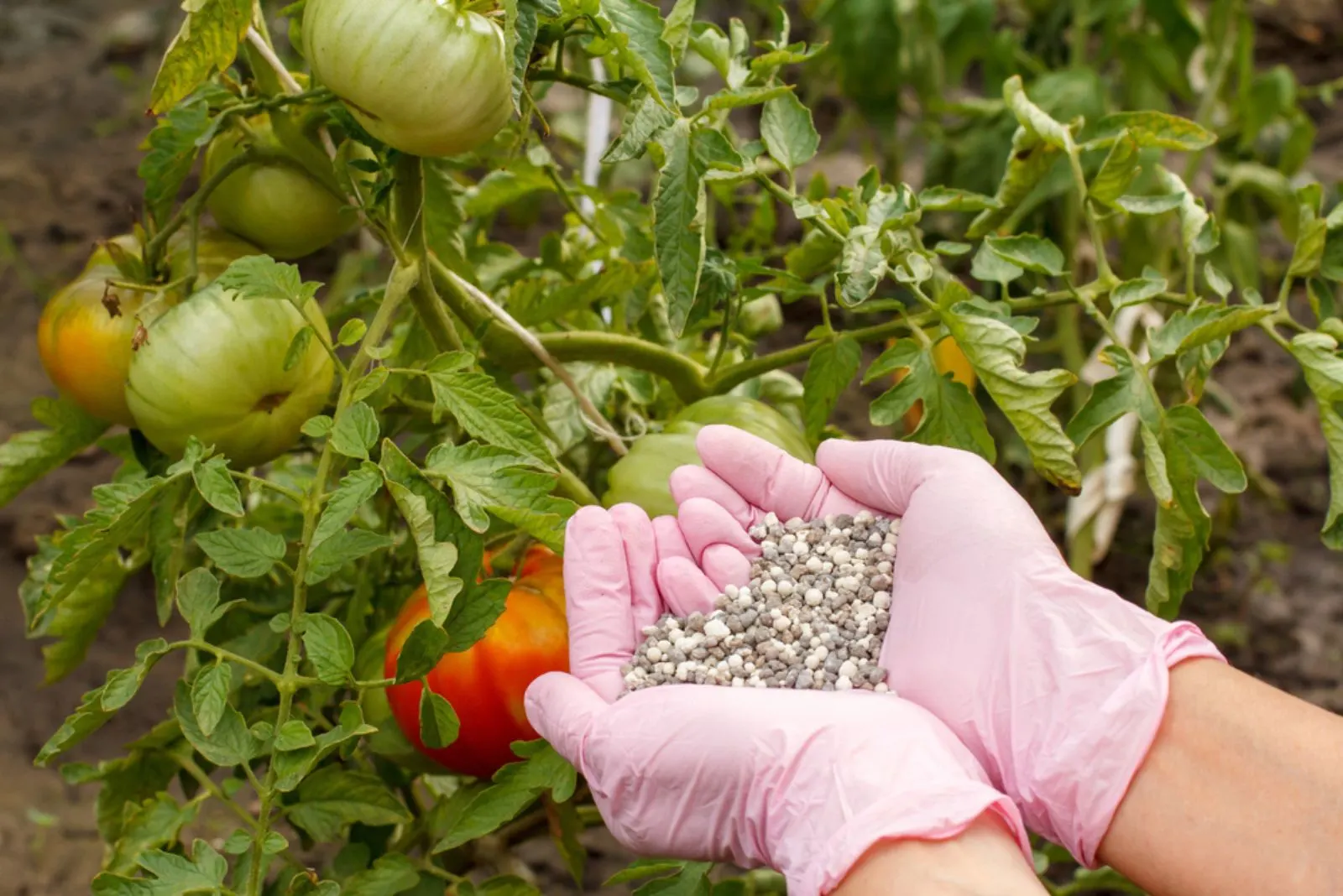
Tomatoes require a balanced fertilizer that contains the essential nutrients they need to grow and produce fruit. Look for a fertilizer with a higher ratio of phosphorus (P) and potassium (K), such as a 10-10-10 or 5-10-10 formula.
2. Apply fertilizer at the right time
Start fertilizing your tomatoes when they are about six inches tall and continue every two to three weeks throughout the growing season. Avoid over-fertilizing as it can lead to excessive vegetative growth and fewer fruits.
3. Use organic fertilizers
Organic fertilizers are a great option for tomatoes as they provide slow-release nutrients and improve soil fertility. Compost, well-rotted manure, and fish emulsion are all good choices to nourish your plants naturally.
4. Mulch around the plants
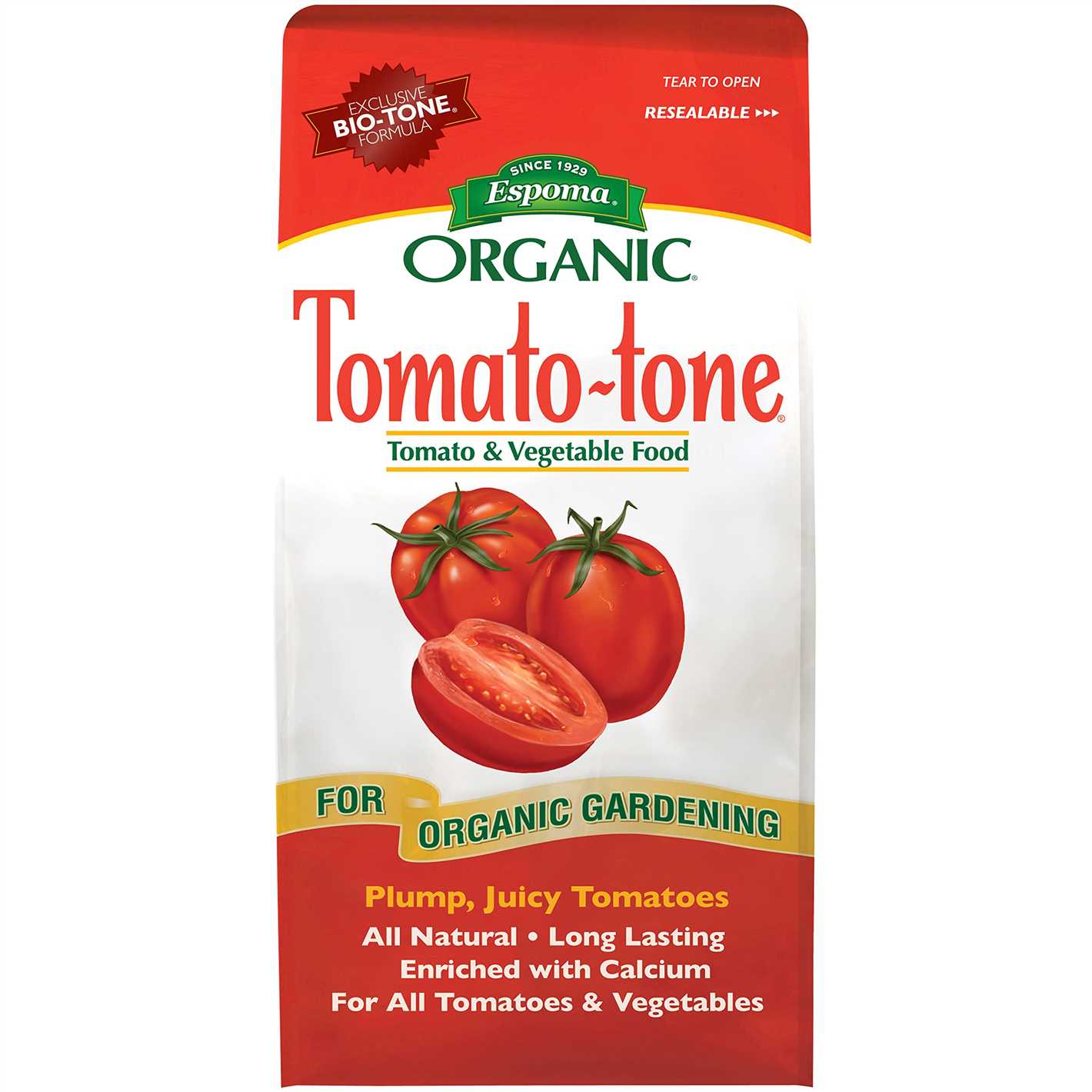
Applying a layer of organic mulch around your tomato plants can help to conserve moisture, regulate soil temperature, and suppress weed growth. This will create an optimal environment for your plants to thrive and produce bountiful fruit.
5. Water properly
Consistent and adequate watering is crucial for healthy tomato plants. Water deeply and evenly, making sure to moisten the entire root zone. Avoid overwatering, as it can lead to diseases and fruit cracking. Aim to keep the soil evenly moist, but not waterlogged.
6. Support your tomato plants
Providing proper support for your tomato plants is important to prevent sprawl and increase air circulation, which can prevent diseases. Use cages, stakes, or trellises to support your plants and help them grow upright.
7. Monitor for pests and diseases
Regularly inspect your plants for any signs of pests or diseases. Early detection and treatment can help prevent damage and ensure healthy growth. Use organic pest control methods whenever possible to avoid the use of harmful chemicals on your plants.
8. Prune for better yields
Pruning your tomato plants can help improve air circulation and light penetration, resulting in better yield and fruit quality. Remove any suckers that grow between the main stem and branches, and trim off any yellow or diseased leaves.
9. Provide proper spacing
Tomato plants need adequate spacing to grow and develop properly. Plant them at least 24-36 inches apart to ensure good air circulation and prevent overcrowding. This will also make it easier for you to access the plants for watering, fertilizing, and harvesting.
10. Monitor soil pH
Tomatoes prefer slightly acidic soil with a pH range of 6.0 to 6.8. Test your soil regularly and amend it if necessary by adding lime to raise the pH or sulfur to lower it. This will ensure that your plants can absorb nutrients efficiently and grow to their full potential.
By following these tips, you can optimize your tomato plants’ growth, increase yields, and enjoy delicious, juicy tomatoes throughout the season. Happy gardening!
Large, Juicy Fruit
1. Choose the right tomato varieties
When aiming for large, juicy fruit, it’s important to choose the right tomato varieties. Look for varieties that are known for their large fruit size and juicy texture. Some popular options include Beefsteak, Big Boy, and Brandywine.
2. Provide adequate water
To ensure juicy tomatoes, it’s crucial to provide them with an adequate water supply. Tomatoes need consistent moisture to develop and maintain their juicy texture. Ensure that your plants receive about 1-2 inches of water per week, either through rainfall or irrigation.
3. Apply organic mulch
Using organic mulch around your tomato plants can help retain moisture in the soil, preventing water loss from evaporation. Mulch also helps regulate soil temperature and reduce weed growth, providing optimal conditions for tomato plants to produce large, juicy fruit.
4. Choose the right fertilizer
Choosing a fertilizer high in phosphorus and potassium can promote fruit development and enhance the flavor of your tomatoes. Look for fertilizers specifically formulated for tomatoes and follow the package instructions for application rates and timing.
5. Prune and support your plants
Pruning your tomato plants can help increase air circulation and sunlight exposure to the fruit, leading to larger and juicier tomatoes. Additionally, providing support such as stakes or cages can prevent the fruit from touching the ground, reducing the risk of rotting and allowing them to fully ripen.
6. Monitor pests and diseases
Pests and diseases can negatively impact tomato plants and their fruit development. Regularly check your plants for signs of pests, such as aphids or tomato hornworms, and take appropriate measures to control them. Similarly, monitor for diseases like blight or wilt and promptly address any issues to ensure healthy fruit development.
7. Harvest at the right time
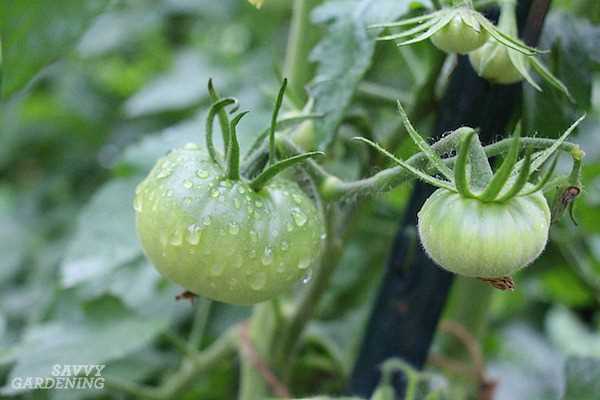
When your tomatoes have reached their desired size and color, it’s important to harvest them at the right time. Leaving them on the vine for too long can lead to overripening and loss of juicy texture. Gently twist or cut the tomatoes from the vine when they are fully ripe but still firm.
8. Storage tips
To maintain the juiciness of your harvested tomatoes, store them at room temperature, out of direct sunlight. Avoid refrigeration, as it can negatively impact the texture and flavor of the fruit. Use them as soon as possible for the best taste and juiciness.
9. Enjoy your juicy tomatoes!
Now that you’ve followed these tips, it’s time to enjoy the delicious fruits of your labor. Whether you eat them fresh in salads or use them in your favorite tomato-based dishes, the large, juicy tomatoes you’ve grown will surely make your taste buds happy!
Choose the Right Fertiliser
Choosing the right fertiliser is crucial for increasing yields and producing large, juicy tomatoes. Here are some tips to help you make the right choice:
- Understand the nutrient needs: Tomatoes require a balanced combination of nitrogen, phosphorus, and potassium (NPK) along with other essential nutrients such as calcium and magnesium. Understanding the nutrient needs of your soil and plants is essential for choosing the right fertiliser.
- Consider organic options: Organic fertilisers provide slow and steady release of nutrients, improving soil health and promoting overall plant growth. Look for organic fertilisers that are specifically formulated for tomatoes.
- Choose a balanced fertiliser: A balanced fertiliser with equal or nearly equal proportions of nitrogen, phosphorus, and potassium (such as a 10-10-10 or 14-14-14 formulation) is a good choice for tomatoes. This helps promote overall plant health and balanced growth.
- Consider slow-release fertilisers: Slow-release fertilisers provide nutrients to the plants over an extended period. This can be particularly beneficial for tomatoes as they have a long growing season.
- Pay attention to micronutrients: In addition to NPK, tomatoes require micronutrients such as iron, zinc, and manganese. Look for fertilisers that include these essential micronutrients in their formulations.
It’s also important to follow the manufacturer’s instructions for application rates and timing. Over-fertilising can lead to nutrient imbalances and may even damage the plants. Regular soil testing can also help you determine the nutrient needs of your soil and make more informed decisions when choosing a fertiliser.
By choosing the right fertiliser tailored to the specific needs of your tomatoes, you can ensure healthy growth, increase yields, and enjoy large, juicy tomatoes.
Find the Right Nutrient Balance
When it comes to fertilising tomatoes, finding the right nutrient balance is crucial for increasing yields and producing large, juicy fruit. Tomatoes require a balanced combination of nitrogen, phosphorus, and potassium, as well as other trace elements, to thrive and produce bountiful harvests. Here are some tips to help you find the right nutrient balance for your tomatoes:
1. Soil Testing
Before you start fertilising your tomatoes, it’s important to conduct a soil test to determine the nutrient composition of your soil. This will give you a baseline understanding of the nutrient levels and help you identify any deficiencies or excesses that may be present.
2. Nitrogen
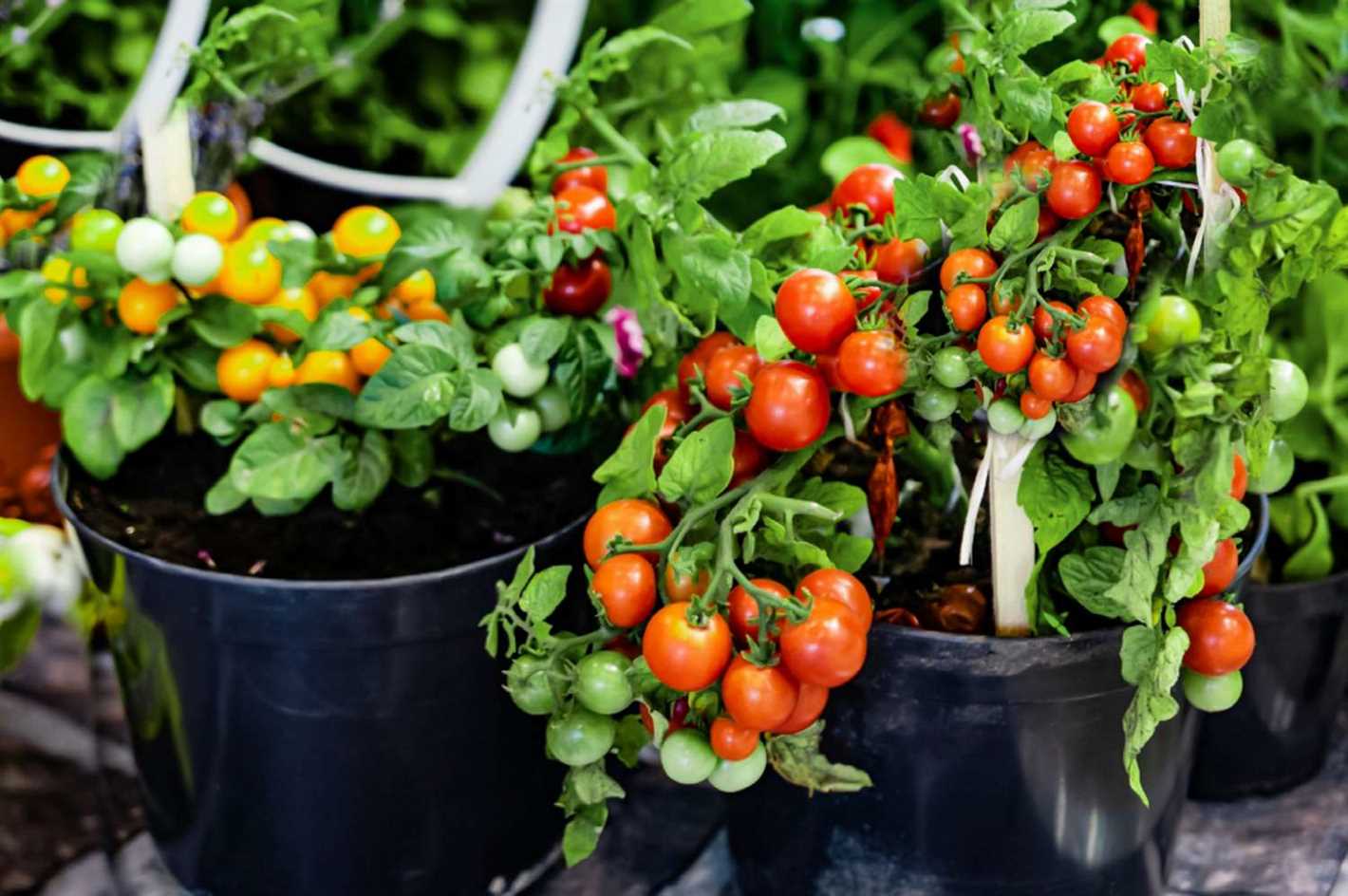
Nitrogen is essential for promoting healthy leaf and stem growth. However, too much nitrogen can lead to excessive vegetative growth at the expense of fruit production. To find the right balance, use a nitrogen-rich fertiliser during the early stages of growth, and then switch to a balanced fertiliser once the plants start flowering.
3. Phosphorus
Phosphorus is important for promoting fruit development and overall plant health. It is especially crucial during the flowering and fruiting stages. Look for a fertiliser with a higher phosphorus content and apply it during these critical periods to ensure optimal fruit growth.
4. Potassium
Potassium helps improve the quality and flavour of tomatoes, as well as enhance their resistance to diseases and pests. Look for a fertiliser that contains a higher amount of potassium and apply it throughout the growing season to support overall plant health and fruit development.
5. Trace Elements
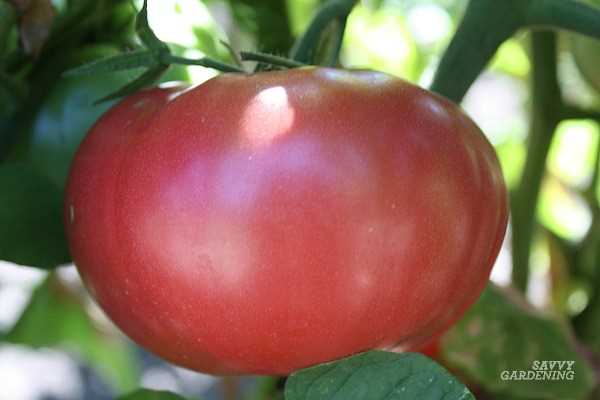
In addition to the major nutrients, tomatoes also require various trace elements, such as calcium, magnesium, and iron, for optimal growth and fruit production. Consider using a balanced fertiliser that includes these trace elements, or supplement with specific fertilisers as needed.
6. Applying Fertiliser
When applying fertiliser, it’s important to follow the instructions on the packaging and avoid overfertilising, as this can damage the plants. Spread the fertiliser evenly around the base of the plants, taking care not to let it come into direct contact with the stems or leaves. Water the plants thoroughly after applying fertiliser to ensure proper absorption.
7. Regular Monitoring
Monitor your tomato plants regularly for any signs of nutrient deficiencies or excesses, such as yellowing leaves, stunted growth, or wilting. Adjust your fertiliser application accordingly to maintain the right nutrient balance throughout the growing season.
By finding the right nutrient balance for your tomatoes, you can help maximise yields, improve fruit quality, and enjoy delicious, juicy tomatoes all season long.
Consider Organic Options
Fertilising tomatoes with organic options can be a great choice for those looking to avoid synthetic chemicals and promote sustainable gardening practices. Organic fertilisers provide nutrients to the plants while also improving the overall soil health, which leads to better tomato yields and fruit quality.
Types of Organic Fertilisers:
- Compost: Compost is a rich source of organic matter and nutrients. It improves soil structure, water retention, and provides a slow release of nutrients to the plants. Adding compost to the soil before planting tomatoes can ensure a steady supply of nutrients throughout the growing season.
- Manure: Using well-aged manure from herbivores, such as cows, horses, or chickens, can be an effective organic fertiliser. Manure is rich in nitrogen, phosphorus, and potassium, which are essential nutrients for tomato plants.
- Bone Meal: Bone meal is high in phosphorus, an important nutrient for fruit development. It can be applied to the soil before planting or during the growing season to promote healthy root development and larger, juicier tomatoes.
- Seaweed Extract: Seaweed extract is derived from seaweed and contains various beneficial plant hormones, trace minerals, and nutrients. It can be applied as a foliar spray or added to the soil to promote vigorous growth, improve disease resistance, and enhance fruit quality.
Tips for Using Organic Fertilisers:
- Follow the recommended application rates mentioned on the product packaging. Over-fertilising can lead to nutrient imbalances and plant burn.
- Apply organic fertilisers evenly around each tomato plant, keeping them a few inches away from the stem to prevent root damage.
- Water the plants after applying organic fertilisers to help the nutrients penetrate the soil and reach the roots.
- Regularly monitor the plants for any signs of nutrient deficiencies or excesses. Adjust the fertiliser application accordingly.
- Consider using a combination of different organic fertilisers to provide a balanced nutrient profile for the tomatoes.
By choosing organic fertilisers, you can nourish your tomato plants naturally and enjoy bountiful harvests of delicious, juicy tomatoes while also taking care of the environment.
Apply Fertiliser at the Right Time
Choosing the right time to apply fertiliser to your tomato plants can greatly impact their growth and yield. It’s important to understand the different stages of a tomato plant’s life cycle and apply fertiliser accordingly.
1. Pre-Planting:
- Before planting your tomato seedlings, it’s recommended to prepare the soil by adding organic matter, such as compost or well-rotted manure.
- This helps improve soil structure, retain moisture, and provide essential nutrients. Work the organic matter into the top 6-8 inches of soil.
2. Early Growth Stage:
- Once your tomato plants have established themselves and started growing, it’s time to start applying a balanced, slow-release fertiliser.
- Aim for fertilisers with an NPK ratio of approximately 10-10-10 or 14-14-14.
- Apply the fertiliser according to the package instructions, typically spreading it evenly around the base of each plant.
3. Flowering and Fruit Development:
- As your tomato plants start flowering and setting fruit, they have increased nutrient demands, particularly for phosphorus and potassium.
- Switch to a fertiliser with a higher ratio of phosphorus and potassium, such as 5-10-10 or 10-20-20.
- Continue to apply the fertiliser every 2-3 weeks or as recommended on the package.
- Be sure to water the plants well after fertilising to help the nutrients reach the roots.
4. Late Season:
- As the tomato plants near the end of their growing season, you can reduce or stop fertiliser applications.
- Allow the remaining fruit to ripen naturally, rather than promoting new growth.
5. Foliar Feeding:
- In addition to soil applications, you can also apply liquid fertilisers to the leaves of your tomato plants.
- Foliar feeding can provide a quick nutrient boost and help address any nutrient deficiencies.
- Use a foliar spray with a balanced NPK ratio and apply early in the morning or late in the evening, avoiding direct sunlight.
By applying fertiliser at the right time and using the appropriate type, you can promote healthy growth, strong root development, and ultimately increase yields of large, juicy tomatoes.
During Planting
Proper fertilisation during the planting stage is essential to promote healthy growth and maximize tomato yields. Follow these tips to ensure your tomatoes get the nutrients they need:
1. Prepare the soil
Before planting, it’s important to prepare the soil by loosening it and removing any weeds or debris. This will create a favorable environment for the tomato plants to grow and absorb nutrients.
2. Add organic matter
Incorporate organic matter, such as compost or well-rotted manure, into the soil. This will improve soil fertility and nutrient availability for the tomato plants. Spread a layer of organic matter evenly over the planting area and mix it into the top 6-8 inches of soil.
3. Apply a balanced fertilizer
Choose a balanced fertilizer with equal amounts of nitrogen (N), phosphorus (P), and potassium (K). Apply the fertilizer according to the package instructions, typically around 2-3 tablespoons per square foot of planting area.
4. Mix fertilizer into the soil
After applying the fertilizer, mix it into the soil thoroughly to ensure even distribution. This will help the tomato plants access the nutrients as they grow.
5. Plant the tomatoes
After preparing the soil and applying the fertilizer, it’s time to plant the tomato seedlings. Dig a hole deep enough to cover the roots and about two-thirds of the stem. Gently place the seedling in the hole and backfill with soil, firming it gently around the base of the plant. Water the newly planted tomatoes to settle the soil.
6. Mulch the planting area
Spread a layer of mulch around the base of the tomato plants to help conserve moisture, suppress weeds, and regulate soil temperature. Organic mulches, such as straw or wood chips, work well for tomatoes.
7. Water thoroughly
After planting, water the tomatoes thoroughly to ensure that the soil is evenly moist. This will help the plants establish their root systems and absorb the nutrients from the soil.
By following these tips during the planting stage, you can give your tomato plants a strong start and set the foundation for high yields of large, juicy fruit.
Throughout the Growing Season
Proper fertilisation is crucial throughout the entire growing season to ensure the best tomato yields and the development of large, juicy fruit. Here are some tips to keep in mind:
- Apply a balanced fertiliser: Begin by applying a balanced fertiliser, such as a 10-10-10, to provide a good mix of essential nutrients for healthy tomato plants.
- Monitor the soil: Regularly test the soil to assess its nutrient levels and pH balance. Adjust the fertiliser application accordingly.
- Feeding schedule: Develop a feeding schedule based on the specific needs of your tomato variety, climate, and soil conditions.
- Foliar feeding: Consider incorporating foliar feeding into your routine. This involves spraying a liquid fertiliser directly onto the tomato plants’ leaves, allowing for quick nutrient absorption.
- Use organic fertilisers: Organic fertilisers are a great option for those looking to avoid synthetic chemicals. Organic options, such as compost and fish emulsion, can provide a gentle and balanced nutrient supply.
- Apply additional potassium: As the tomato plants start to develop fruits, it is beneficial to increase the potassium levels in the soil. Potassium-rich fertilisers, like potassium sulfate or wood ash, can help promote fruit ripening and enhance flavour.
- Watering: Proper watering is essential to ensure the nutrients are evenly distributed to the tomato plants’ roots. Avoid overwatering, as it can lead to nutrient leaching and root rot. Aim for consistent moisture levels and deep watering sessions to encourage healthy growth.
- Mulching: Applying a layer of organic mulch around the tomato plants can help regulate soil temperature, retain moisture, and suppress weed growth. Use materials like straw, grass clippings, or wood chips as mulch.
- Monitor plant health: Regularly inspect the tomato plants for any signs of nutrient deficiencies, pests, or diseases. Address any issues promptly to prevent further damage to plant health and fruit development.
Remember, each tomato variety may have its own specific nutrient requirements, so it’s essential to research and adjust fertilisation practices accordingly. By providing the right nutrients and maintaining proper care throughout the growing season, you can maximise tomato yields and enjoy delicious, juicy fruit.
Avoid Over-Fertilising
- While fertilising tomatoes can be beneficial for increasing yields and fruit quality, it’s important to avoid over-fertilising.
- Over-fertilising tomatoes can lead to excessive vegetative growth at the expense of fruit production, resulting in fewer and smaller tomatoes.
- Excessive fertilizer application can also lead to nutrient imbalances, which can cause various issues such as blossom end rot or poor flavor.
- It’s crucial to follow a well-balanced fertiliser program and monitor the nutrient levels in the soil to ensure optimal growth and fruiting of tomato plants.
Here are a few tips to avoid over-fertilising tomatoes:
- Conduct a soil test: Before fertilising, conduct a soil test to determine the nutrient levels in the soil. This will help you understand which nutrients are deficient and which ones may already be at optimal levels. Adjust your fertiliser application accordingly.
- Use slow-release fertilisers: Slow-release fertilisers provide a steady supply of nutrients over an extended period. This reduces the risk of applying too much fertilizer at once and causing nutrient imbalances.
- Follow the recommended dosage: Always follow the recommended dosage instructions provided by the fertiliser manufacturer. Applying more than the recommended amount can harm the plants and increase the risk of over-fertilising.
- Monitor plant health: Regularly inspect your tomato plants for signs of nutrient deficiencies or excesses. Symptoms such as yellowing leaves, stunted growth, or burnt leaf margins can indicate over-fertilisation.
- Adjust fertiliser application based on plant needs: Fertiliser requirements can vary depending on the growth stage of the tomato plants. Adjust your fertiliser application rates based on the specific needs of your plants, taking into consideration factors such as plant size, growth rate, and fruit set.
By following these tips, you can avoid the negative effects of over-fertilising and ensure healthy, productive tomato plants with abundant yields of large and juicy fruit.
“Question-Answer”
What are some tips for fertilising tomatoes?
When fertilising tomatoes, it is important to choose a balanced fertiliser that contains nitrogen, phosphorus, and potassium. It is also a good idea to add organic matter, such as compost or well-rotted manure, to improve soil fertility. Fertilisers should be applied consistently throughout the growing season, starting at planting and continuing every few weeks until the plants are mature. Mulching around the plants can help to conserve moisture and prevent weed growth, which will also contribute to higher yields.
How can I increase tomato yields?
There are several methods you can employ to increase tomato yields. First, choose the right variety of tomato for your growing conditions. Some varieties are more prolific than others. Second, ensure that your plants receive the proper amount of sunlight, water, and nutrients. Tomatoes require a minimum of 6-8 hours of direct sunlight per day. Third, prune your tomato plants regularly to remove suckers and promote proper air circulation. Finally, make sure to fertilise your plants consistently throughout the growing season using a balanced fertiliser.
What kind of fertiliser should I use for tomatoes?
For tomatoes, it is best to use a balanced fertiliser that contains equal amounts of nitrogen, phosphorus, and potassium. This ensures that the plants receive all the essential nutrients they need for healthy growth and development. Look for a fertiliser with an NPK ratio of around 10-10-10 or 14-14-14. Additionally, consider using organic fertilisers, such as compost or well-rotted manure, which provide additional micronutrients and improve soil fertility.
When should I fertilise my tomato plants?
Tomato plants should be fertilised at planting and consistently throughout the growing season. Start by incorporating a balanced fertiliser into the soil before planting. Once the plants are established, fertilise every few weeks until they are mature. It is important to follow the recommended application rates on the fertiliser package and avoid over-fertilisation, as this can lead to excessive foliage growth at the expense of fruit production.
Can I use organic fertilisers to fertilise tomatoes?
Absolutely! Organic fertilisers, such as compost or well-rotted manure, are great options for fertilising tomatoes. They not only provide essential nutrients, but also improve soil structure, moisture retention, and microbial activity. These organic materials can be incorporated into the soil before planting or applied as a top dressing throughout the growing season. Using organic fertilisers is a sustainable and environmentally friendly way to nourish your tomato plants and promote healthy, vigorous growth.
Why is it important to mulch around tomato plants?
Mulching around tomato plants has several benefits. First, it helps to conserve soil moisture by reducing evaporation. This is particularly important during hot and dry weather, as tomatoes require consistent moisture to develop and ripen properly. Second, mulch helps to suppress weed growth, which can compete with tomatoes for nutrients and water. Finally, mulching regulates soil temperature, keeping it cooler in the summer and warmer in the winter, which can improve overall plant health and productivity.







